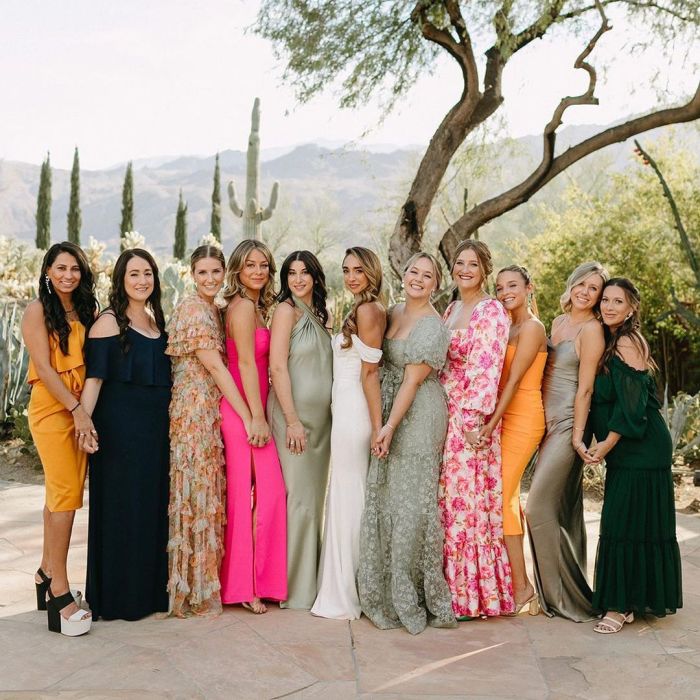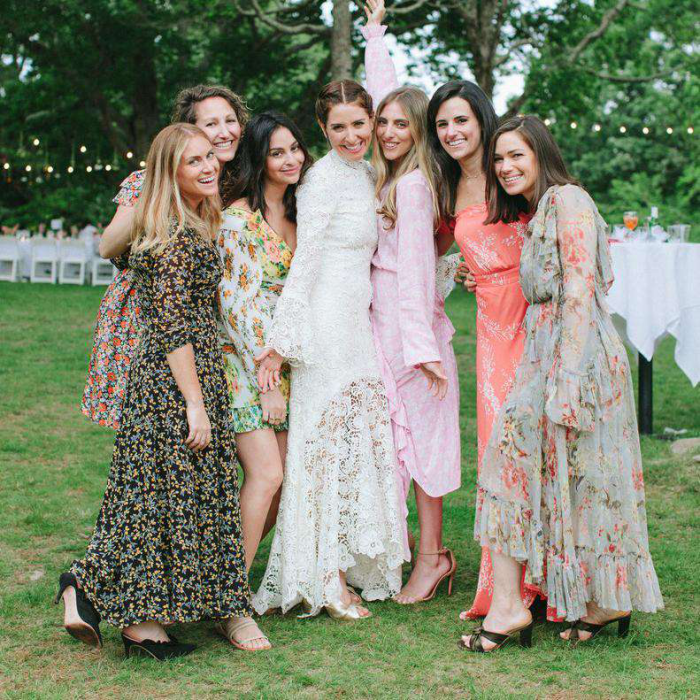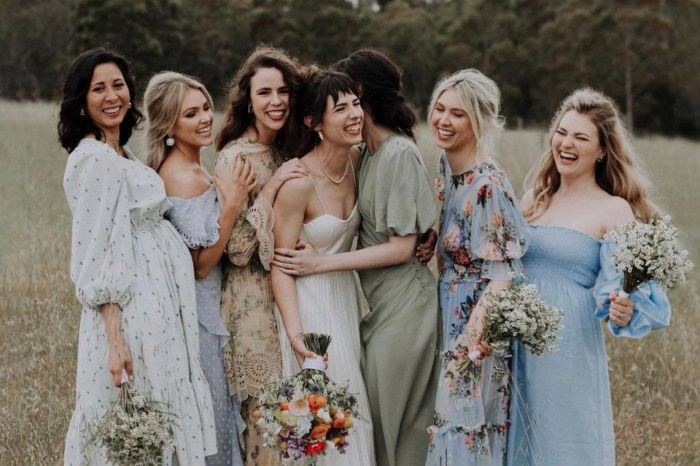Wedding Guest Dress Codes: Dress For Attending Wedding
Dress for attending wedding – Navigating wedding dress codes can feel daunting, but understanding the nuances ensures you arrive appropriately attired and show respect for the happy couple. Different dress codes indicate varying levels of formality, influencing your outfit choices from head to toe.
Understanding Different Dress Codes
Various dress codes dictate the level of formality expected. Knowing the difference is key to choosing the right outfit.
| Dress Code | Description | Appropriate Attire | Example |
|---|---|---|---|
| Black-Tie | Formal evening wear. | Floor-length gowns for women; tuxedos or dark suits for men. | Elegant floor-length gown with intricate beading, paired with classic heels and a clutch. |
| Cocktail | Semi-formal; allows for more flexibility. | Cocktail dresses (knee-length or midi), dressy jumpsuits, or pantsuits for women; suits or dressy blazers for men. | A sophisticated midi dress with statement jewelry and elegant heels. |
| Semi-Formal | Dressy but not overly formal. | Knee-length or midi dresses, skirts and blouses, dressy pantsuits for women; suits or dress pants and a button-down shirt for men. | A stylish knee-length dress with a cardigan and comfortable wedges. |
| Casual | Relaxed and informal. | Sundresses, skirts and tops, pants and a nice top for women; khakis or chinos and a button-down shirt or polo shirt for men. | A flowy sundress with sandals for a daytime casual wedding. |
Interpreting Ambiguous Dress Codes
When the dress code is unclear, it’s best to err on the side of slightly more formal than less. Contacting a friend or family member attending the wedding for clarification is also a good option.
Choosing a Dress Based on Venue and Season
The wedding venue and season significantly impact the appropriateness and comfort of your attire. Consider the environment and weather conditions when selecting your outfit.
Venue and Seasonal Considerations for Dress Selection

Source: greenweddingshoes.com
Different venues call for different dress styles. Similarly, seasonal weather dictates appropriate fabric choices.
- Beach Weddings: Lightweight fabrics like cotton, linen, or silk are ideal. Opt for flowing maxi dresses or sundresses. Avoid anything too heavy or formal.
- Garden Weddings: Floral prints or pastel colors work well. Choose comfortable fabrics like chiffon or cotton. Avoid dresses that are too long or restrictive.
- Ballroom Weddings: More formal attire is usually appropriate. Floor-length gowns or elegant cocktail dresses are suitable choices.
- Summer Weddings: Lightweight fabrics like cotton, linen, silk, and chiffon are breathable and comfortable. Bright colors and patterns are appropriate.
- Winter Weddings: Opt for heavier fabrics like velvet, wool, or brocade. Darker colors and richer textures are more suitable. Consider a long-sleeved dress or a dress with a jacket or wrap.
Fabric Choices for Different Seasons and Venues
Choosing the right fabric ensures comfort and appropriateness for the setting and weather.
- Summer: Cotton, linen, silk, chiffon, chambray
- Winter: Velvet, wool, brocade, lace
Dress Examples for Various Venue/Season Combinations

Source: co.uk
- Summer Beach Wedding: A flowing linen maxi dress in a pastel color.
- Winter Ballroom Wedding: A floor-length velvet gown in a deep jewel tone.
- Spring Garden Wedding: A floral-print midi dress in a light and airy fabric.
- Autumn Barn Wedding: A comfortable but elegant A-line dress in a warm autumnal color.
Flattering Dress Styles for Different Body Types
Choosing a dress that flatters your body type enhances your confidence and overall appearance. Understanding your body shape helps you select styles that accentuate your best features.
Dress Styles for Various Body Shapes

Source: pressablecdn.com
Different dress styles complement different body shapes. Knowing your body type will help you select flattering options.
- Hourglass: Fitted dresses that cinch at the waist, A-line dresses, wrap dresses.
- Pear: A-line dresses, empire waist dresses, fit-and-flare dresses, dresses with details on the top half.
- Apple: Empire waist dresses, V-neck dresses, A-line dresses, dresses with a defined waistline.
- Rectangle: Wrap dresses, belted dresses, dresses with ruffles or details to add curves, A-line dresses.
Visual Guide to Flattering Dress Styles
Imagine an hourglass figure looking stunning in a form-fitting sheath dress that accentuates the curves. A pear-shaped body type would be beautifully complemented by an A-line dress that balances the proportions. An apple shape would find an empire waist dress flattering, drawing attention upward. Finally, a rectangle body type could create the illusion of curves with a wrap dress that cinches at the waist.
Accessorizing a Wedding Guest Outfit
Accessories elevate your wedding guest look, adding personality and polish. Carefully selected accessories complete the ensemble and reflect the occasion’s formality.
Accessory Selection Tips
Accessories should complement your outfit and the wedding’s formality. Consider the dress code, venue, and season when choosing your accessories.
- Jewelry: Keep jewelry simple and elegant for formal events. More playful jewelry is acceptable for less formal occasions.
- Shoes: Choose shoes that are comfortable and appropriate for the venue. Heels are generally suitable for formal events, while flats or wedges are appropriate for less formal occasions.
- Handbags: A clutch is appropriate for formal events. A smaller shoulder bag or crossbody bag is suitable for less formal occasions.
Accessory Recommendations
- Formal Wedding: Delicate necklace, elegant heels, small clutch.
- Casual Wedding: Statement earrings, comfortable wedges, crossbody bag.
Etiquette Considerations for Wedding Guest Attire
Respecting the couple’s wishes and maintaining appropriate attire demonstrates consideration and good etiquette. Certain attire should be avoided at weddings.
Appropriate and Inappropriate Attire
Wedding attire should be respectful of the occasion and the couple’s preferences. Avoid anything too revealing, casual, or attention-grabbing.
- Avoid: White or ivory (unless specifically requested), overly revealing clothing, distressed denim, athletic wear.
- Consider: The overall tone of the wedding, the time of day, and the venue.
Color Choices
While white and ivory are generally avoided, other colors are generally acceptable. However, consider the overall color scheme of the wedding when selecting your outfit.
Choosing the right attire for a wedding is crucial; you want to look your best while respecting the occasion’s formality. The season significantly influences your choices, and if the wedding is in autumn, you’ll need to consider different fabrics and colors. For helpful guidance on appropriate attire, you might find this article on dress for a fall wedding particularly useful.
Ultimately, your wedding guest outfit should reflect both the season and the overall wedding aesthetic.
Finding and Purchasing the Perfect Dress
Finding the perfect wedding guest dress involves careful planning and consideration of your budget, style, and the event itself. Several options exist for purchasing a dress.
Dress Shopping Tips, Dress for attending wedding
Shopping for a wedding guest dress requires a strategic approach to ensure you find the perfect outfit within your budget and preferences.
- Set a Budget: Determine how much you are willing to spend before you start shopping.
- Consider Your Style: Choose a dress that reflects your personal style and makes you feel confident.
- Shop Around: Compare prices and styles from different retailers before making a purchase.
- Check Sizing Charts: Pay close attention to sizing charts, especially when shopping online.
- Account for Alterations: Factor in the cost of potential alterations if needed.
Online Shopping Considerations
Online shopping offers convenience, but it’s crucial to be aware of potential challenges and implement strategies to mitigate them.
- Read Reviews: Carefully read customer reviews before making a purchase.
- Check Return Policies: Understand the retailer’s return policy in case the dress doesn’t fit or meet your expectations.
- Order Early: Allow ample time for shipping and potential alterations.
FAQ Corner
Can I wear white to a wedding?
Generally, no. White is traditionally reserved for the bride. Unless explicitly stated otherwise by the couple, avoid wearing white or off-white outfits.
What if the dress code is unclear?
If the invitation’s dress code is ambiguous, it’s best to err on the side of slightly more formal attire. Contact a mutual friend or family member of the couple if you are still unsure.
How far in advance should I start shopping for a wedding guest dress?
It’s advisable to begin shopping at least 2-3 months in advance, especially for popular styles or sizes. This allows ample time for alterations or ordering if necessary.
What should I do if my dress needs alterations?
Find a reputable tailor or seamstress well in advance of the wedding date. Allow sufficient time for alterations, as this can sometimes take several weeks.
